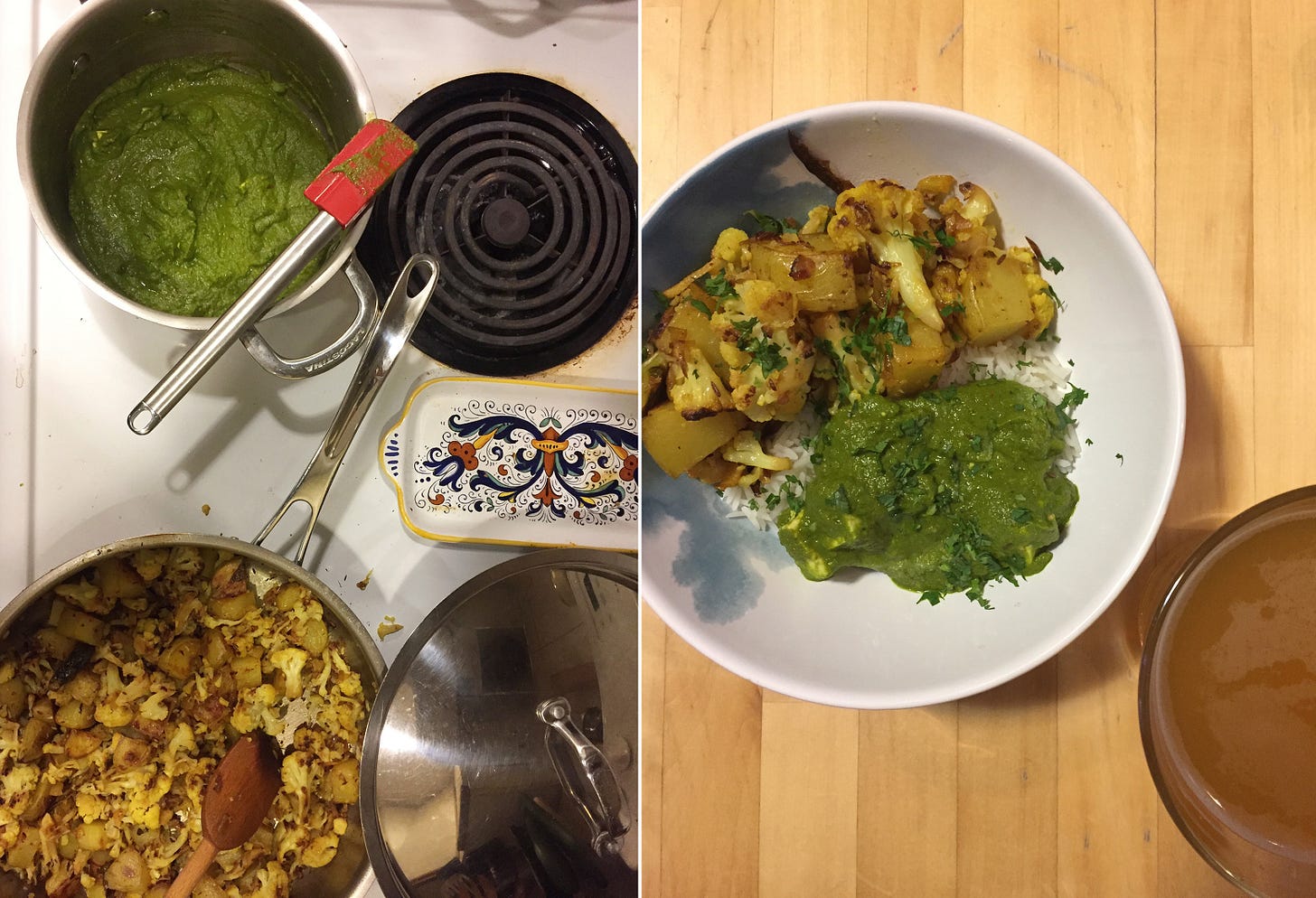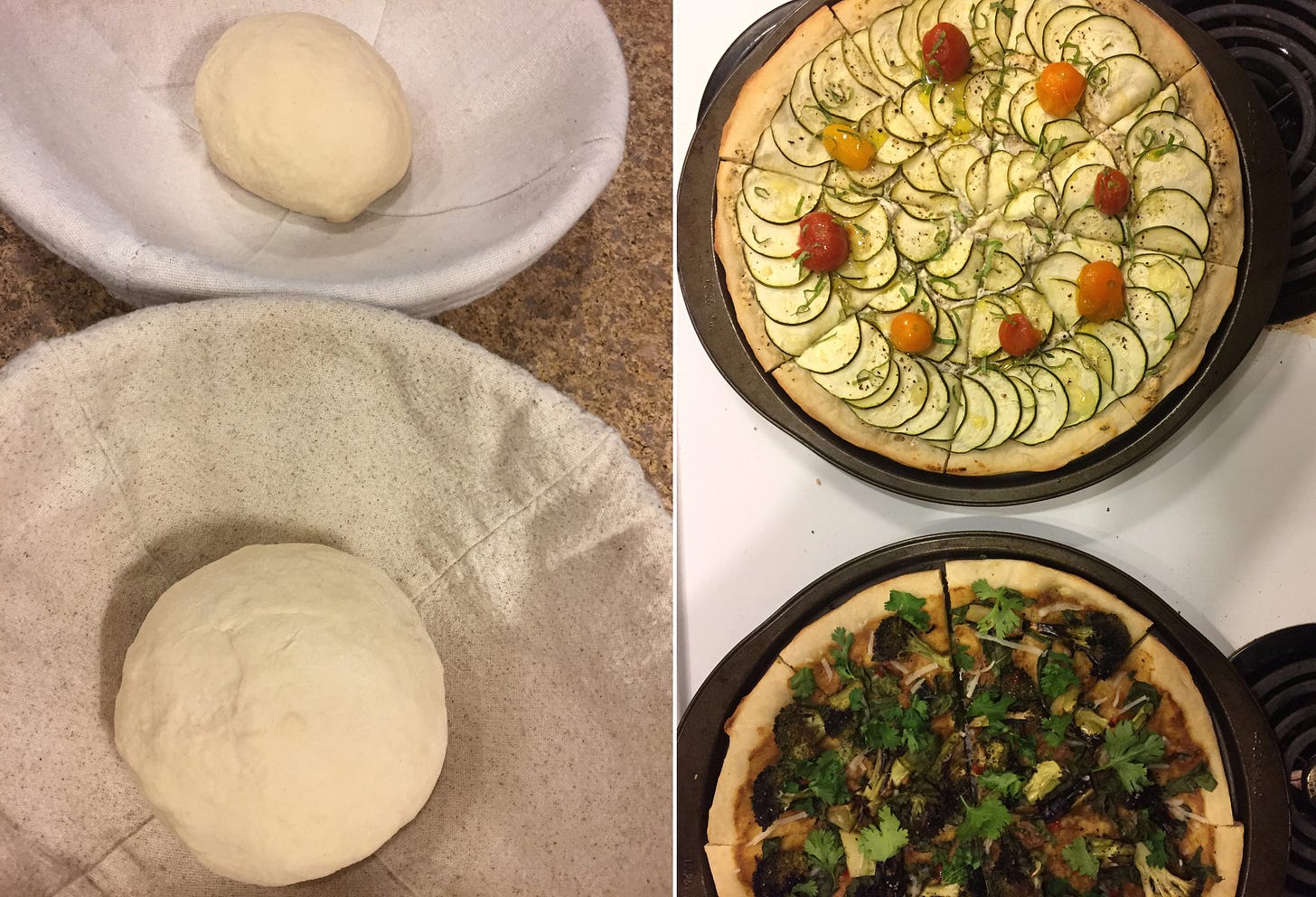Greetings friends, here we are already somehow four days into September. Soon we’ll be switching back to our heavier quilts, making hot coffee in the morning instead of pulling cold brew out of the fridge, and getting excited about soup again. This year in particular, but really most years in recent memory, feels both impossibly long and like it’s passing in the blink of an eye. The ravages of time, etc. etc. But for now, let’s enjoy this final long weekend of summer and the bountiful harvest of the next few weeks.

One thing I love about living in North Van is the proximity to nature: how you can be in a quiet wooded area or someplace that feels completely wild without having to go far at all. Even with that in mind, our Sunday afternoon hike along the Howe Sound Crest trail to St. Mark’s Summit was a lot more rugged than I was expecting. I won’t say I didn’t enjoy it, but my knees definitely took a few days to stop punishing me after picking our way up and down a mountain trail comprised largely of rocks and tree roots. On our journey back from the summit, the breezy weather had turned to rain, which was actually very cozy and refreshing in the partial shelter of the forest, and the rain made it extra satisfying to return home and make our planned dinner of Indian food.
In my early days of cooking when I’d tried to make Indian dishes I liked, I was always disappointed: they never tasted very much like the ones I’d loved from Punjabi restaurants or dosa houses. Eventually I came to accept that there will always be certain limitations and it wasn’t realistic for me to try to recreate what professional Indian cooks do, and I just looked for ways I could achieve the richness and aromatic spiciness that I craved. Adding a dash of citrus or vinegar to finish a dish. Toasting whole spices instead of using ground was a revelation. Tossing in a dollop of yogurt to round out a tomatoey chana masala.
For our rainy evening, post-wilderness meal, I made the saag paneer and roasted aloo gobi from Priya Krishna’s wonderful book, Indian-ish. I appreciate the recipes in this book because she values traditional flavours, but focuses on making delicious food accessible rather than aiming for 100% authenticity: for instance, her ‘saag paneer’ recipe is actually called ‘spinach and feta cooked like saag paneer’. I also used kale instead of spinach in my version because we have so much of it right now, and although because of its rougher texture I did end up needing more liquid to get it to blend, it came out really well. It turned out quite spicy, too, so the hearty and milder aloo gobi was a great accompaniment.

I had a surplus of cherry and grape tomatoes now that the ones on the vines have started to ripen, so I made tomato confit. I’ve eaten confit things in the past but never made it myself, and it was easy and incredibly flavourful. Confit sounds fancy thanks to the weight we’ve attached to French cooking methods, but essentially you’re just slow roasting something (tomatoes) in a big pool of fat (olive oil) with some flavouring (garlic and basil) until it looks soft and tastes like decadence. I’ve mostly been eating them on toast for breakfast with a bit of cheese, but I bet they would be delicious tossed into some pasta or as a garnish for a creamy soup. I won’t lie, confit does use what you might consider to be outrageous amounts of oil, but the good news is that you can keep it and use it after you’ve eaten all your confit (which needs to be stored in the oil to help preserve it).

While we’re on the subject of olive oil, do you have two different bottles of it in your kitchen? If you don’t already, I invite you to make this change! It’s good to have your everyday basic one, and your nice one. The basic one (for things like roasting vegetables and pan-frying) can be any cheap EVOO from Costco or whatever, but if you try to use this for something that relies heavily on it for flavour (like salad dressing or aïoli), it will be at best, bland, and at worst, unpalatably bitter. Your nice olive oil might be a little pricier, but it should have a flavour of its own that’s enjoyable just to dip a piece of bread into. I like Frantoia for its sweetish and clean taste, but Italissima (used in the confit above) is a good inexpensive one that has a satisfyingly green colour and a lot of flavour.
If you’re familiar with my instagram stories, you already know that pizza is on the regular menu rotation in my house. I love minimalist Italian toppings and takeout-style classics, but we make pizza so often that I’ll also find myself using the dough as a canvas for some experimental combo that’s come to mind, or whatever I need to use up from my produce drawer. This week I had another mass of zucchini from the garden, so I made a variation of this one with a base of black pepper chèvre, thyme, & lemon, with basil and some of the confit tomatoes to finish. I didn’t have enough of the goat cheese to do two, so the other one was a mishmash of fridge leftovers: curried peanut sauce base, grilled broccoli, kale, and a bit of vegan mozza.

Finally, since we’re up to our elbows in tomatoes now, I made a tomato-avocado salad with Samin Nosrat’s tomato vinaigrette— this would have been a great time to use some of the oil from my confit, but sadly, I forgot. I added some fresh basil, parsley, & oregano, oil-packed tuna, and pickled red onions to the salad, and served with pan-toasted sourdough rye. I had intended to make croutons and got distracted, but for the purposes of this meal I think this was even better: the benefits of a crisp crouton and the texture contrast of a tomato toast, all for a lot less work and mess.

Media:
I enjoyed reading this piece by Julie Vadnal about how, whether you use the term or not, in this age of abundance and instagram, “everyone’s a foodie now”. It gets to the root of something I’ve found frustrating: when food is valued for clout rather than enjoyment of the food itself. I’m sure many of us have had the experience of finally eating at a restaurant that always had an 90-minute lineup, only to find the experience didn’t live up to your expectations. Or you’ve seen a visually stunning treat continually show up on instagram while you wonder how to practically manage eating it, or if it even tastes good. There is truth to the idea that part of the appeal within food culture is in accessing some aspect of it that is viewed as difficult to obtain— visiting a popular restaurant that doesn’t take reservations, a limited-edition beverage, a highly seasonal or expensive ingredient, a Caesar with ever more ridiculous levels of garnish.
That’s not to say I’ve never participated in any of this (I’m only human!), and it’s of course true that there is much to experience within food culture aside from the simple pleasure of eating. But as the article mentions, in the midst of the pandemic, it is heartening to see so many people who may have eaten meals out multiple times per week testing the waters of home cooking, and looking to local sources to support the place they live in. It’s helping to bring the focus back to the fact that food is something we must have to sustain ourselves, that we can’t rely too heavily on having access to whatever ingredient we desire, and that we have always had the ability to create joy for ourselves through food right here at home.
Thanks for reading— if you enjoyed this newsletter, please share it with a friend! To close out the week (in case you haven’t already seen it) please enjoy this cat’s experience of broccoli.


